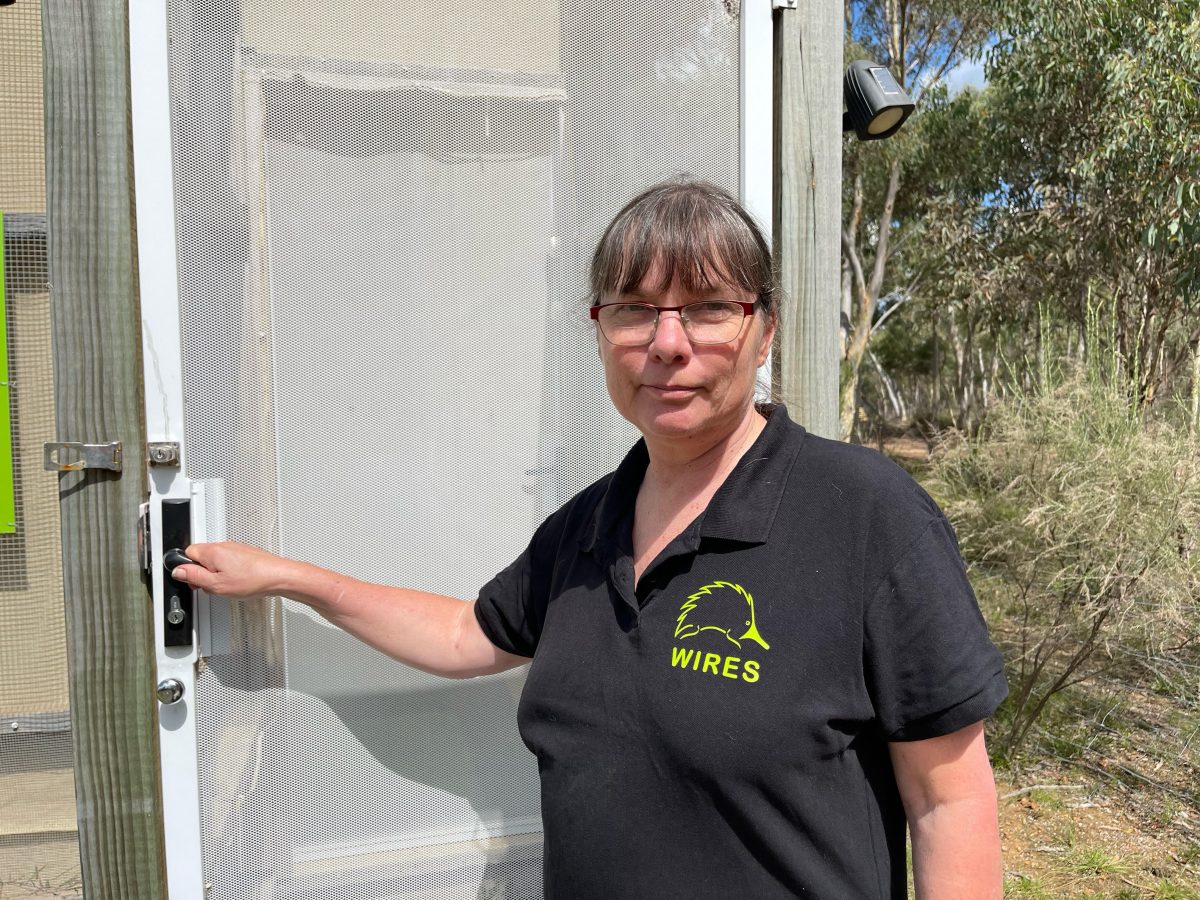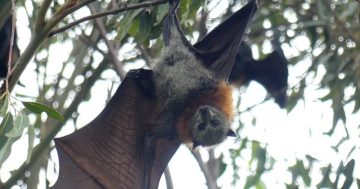
Grey-headed flying foxes are being forced out of their traditional habitat because of food shortages. Photo: Eurobodalla Council.
Climate change and habitat loss are forcing grey-headed flying foxes to abandon their traditional migratory routes and set up home in new regions, including the NSW Southern Tablelands, scientists have warned.
This new migratory behaviour is putting both the animal and communities under strain.
The grey-headed flying fox is one of about three species of flying foxes that migrate around the coastal eastern ranges of NSW, foraging for flowering eucalypt and nectar-rich plants and spreading the pollen across the state. Scientists say this vital migration of bats and flying foxes is crucial to the genetic diversity of native forests.
Wildlife ecologist Dr Peggy Eby tracks the animals from the south to the subtropical areas of northern NSW to collect information about the species’ breeding season. She says a proportion of flying foxes have started changing their behaviour because of a food shortage.
Speaking recently at a Goulburn symposium titled The Flight of the Flying Fox, Dr Eby said the flying foxes continued to behave as though they were experiencing nutritional or metabolic stress.
“They are increasingly roosting in areas where they didn’t used to occur, and in areas that don’t provide them with native fruit, and they have increased the number of roosts, particularly in urban areas,” she said.
“It is a really problematic wildlife management issue, and it’s important, I think, for the people who live nearby to understand what’s causing this. This is not a species whose population is exploding, this is a species under an enormous amount of pressure.”
In Goulburn, about 1500 grey-headed flying foxes now frequently colonise the trees around the city’s wetlands.
Dr Eby said new flying fox camps were appearing in the Upper Lachlan Shire, with about 1000 animals last year taking up residence at Markdale Station, a private property well known for its extensive Edna Walling garden. They were apparently drawn to the area by a mass flowering of white box eucalypts.
Chief executive officer of conservation group The Great Eastern Ranges (GER), Gary Howling, said increased plantings of nectar-rich trees and shrubs, such as red gum, spotted gum, swamp mahogany and grey ironbark, could make a difference.
“Flying foxes rely on flowering species to get the energy-rich diet they need to survive,” Mr Howling said.
“Unfortunately, these are the same ones that continue to be lost at a rapid rate, leading to food bottlenecks occurring in winter and spring.
“By planting for pollinators, we can boost sources of food for flying foxes during these leaner months, while also supporting the vital pollination services they provide and other local wildlife.”

WIRES volunteer Heather Caulfield, who has been rescuing flying foxes for a decade, is working with scientists to warn of the species’ plight. Photo: Supplied.
WIRES volunteer Heather Caulfield has been rescuing, rehabilitating and releasing bats back into the wild in the southern parts of NSW, from the Shoalhaven River to the Abercrombie ranges, over the past decade.
She said as more flying foxes moved into urban areas, scientists and wildlife rescue volunteers were working hard to raise awareness about their important role in the ecosystem.
“People are concerned about their health or damage to trees and property, but the fact is that the bats are there because the flowering is there, and they are going to move on,” Ms Caulfield said.
“There’s around 30 species of bat in NSW alone, and each species has its own environmental requirements and temperaments. They’re so important to the environment.”
The Goulburn symposium was part of a series of talks run by Kanangra-Boyd to Wyangala Link and supported through Cores, Corridors and Koalas – a partnership between the GER and WWF-Australia.
More information about flying foxes and microbats is available on the WIRES rescue site.








